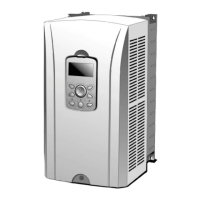
Do you have a question about the LS SV-iS7 Series and is the answer not in the manual?
| Input Voltage | 3-phase 380-480V AC |
|---|---|
| Output Frequency | 0-400Hz |
| Frequency Range | 0.1 ~ 400 Hz |
| Power Range | 0.4kW ~ 450kW |
| Braking Unit | Built-in or external (optional) |
| Control Method | V/F control, Sensorless vector control |
| Protection Functions | Overcurrent, overvoltage, undervoltage, overload, overheating, short circuit, phase loss |
| Communication | RS-485 (Modbus RTU), Optional: Profibus-DP, CANopen |
| Operating Temperature | -10°C to +50°C |
| Storage Temperature | -20°C to +65°C |
| Enclosure | IP20 |
| Cooling Method | Fan cooling |
| Humidity | 5-95% (non-condensing) |
| Altitude | Up to 1000m |
Describes warning and caution symbols used in the manual and on the equipment.
Lists essential safety rules and precautions for using the product safely.
Illustrates the physical layout of the Ethernet option module and its connectors.
Explains the meaning and status indication of each LED on the module.
Provides step-by-step instructions for installing the module onto the iS7 inverter.
Details the pin assignments and cable color codes for network connection.
Describes the characteristics and applications of different twisted pair cable types.
Introduces the keypad parameters for Modbus TCP and EtherNet/IP communication.
Explains parameters related to card identification and LED status monitoring.
Details the settings for network addressing.
Covers parameters for network speed and CIP communication instances.
Describes parameters for managing data status and control.
Explains the process for updating communication parameters.
Details the structure of Modbus/TCP frames, including headers and data units.
Explains the Modbus TCP function codes used for data requests and responses.
Describes the Modbus TCP functions for reading and writing register data.
Details how Modbus TCP reports errors and exceptions.
Outlines the layered structure and key terms of EtherNet/IP.
Explains data exchange using I/O messages between devices.
Details the format of inverter status data sent to clients.
Details the format of reference data sent from clients to the inverter.
Describes attribute-based communication for reading/writing values.
Provides details on the Identity Object for device information.
Details attributes related to motor specifications and parameters.
Explains objects for controlling drive states and commands.
Covers specific attributes related to AC drive operation.
Details parameters for configuring inverter behavior during communication loss.
Describes inverter actions when communication is interrupted.
Explains the status indicated by the Link 1 and Link 2 LEDs.
Describes the status indications for the Error and CPU LEDs.